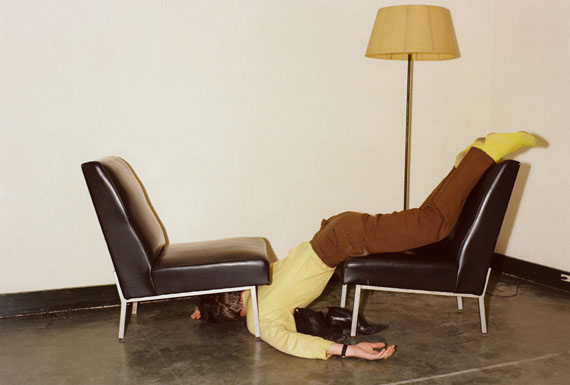
L’Empereur_06, 1982
Aus der Serie: L’Empereur
C-Print, 10,1 x 14,7 cm, 31 x 41 cm
© Thomas Ruff / VG Bild-Kunst, Bonn 2020
SUBJECT and OBJECT: PHOTO RHINE RUHR
SUBJEKT und OBJEKT. FOTO RHEIN RUHR
Gosbert Adler » Andrea Robbins & Max Becher » Alexander Basile » Lothar Baumgarten » Bernd & Hilla Becher » Boris Becker » Laurenz Berges » Eva Bertram » Anna & Bernhard Blume » Rudolf Bonvie » Natascha Borowsky » Wendelin Bottländer » Frank Breuer » Joachim Brohm » Ralf Brueck » Susanne Brügger » Louisa Clement » Volker Döhne » Sabine Dusend » Christine Erhard » Jan Paul Evers » Julian Faulhaber » Hans-Peter Feldmann » Annette Frick » Bernhard Fuchs » Beate Gütschow » André Gelpke » Edith Glischke » Philipp Goldbach » Stefanie Grebe » Willy Gursky » Andreas Gursky » Candida Höfer » Axel Hütte » Jitka Hanzlová » Volker Heinze » Katlen Hewel » Bernd Jansen » Arno Jansen » Irmel Kamp » Jürgen Klauke » Astrid Klein » Fatih Kurceren » Alwin Lay » Tamara Lorenz » Knut Wolfgang Maron » Klaus Mettig » Peter Miller (*1978) » Christopher Muller » Elisabeth Neudörfl » Angela Neuke » Thomas Neumann » Simone Nieweg » Detlef Orlopp » Peter Piller » Johannes Post » Timm Rautert » Max Regenberg » Johanna Reich » Heinrich Riebesehl » Sebastian Riemer » Alexander Romey » Tata Ronkholz » Martin Rosswog » Thomas Ruff » Gregor Sailer » Jörg Sasse » Martina Sauter » Morgaine Schäfer » Wilhelm Schürmann » Michael Schmidt » Stefan Schneider » Berit Schneidereit » Ursula Schulz-Dornburg » Helmut Schweizer » Katharina Sieverding » Otto Steinert » Thomas Struth » Anett Stuth » Niklas Taleb » Peter Thomann » Walter Vogel » Anna Vogel » Malte Wandel » Moritz Wegwerth » Christoph Westermeier » Christopher Williams » Petra Wittmar » Lothar Wolleh » Martin Zellerhoff » & others
Exhibition: 21 Mar – 16 Aug 2020
Fri 8 May 19:00
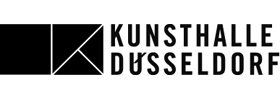
Kunsthalle Düsseldorf
Grabbeplatz 4
40213 Düsseldorf
+49 (0)211-8996240
mail@kunsthalle-duesseldorf.de
www.kunsthalle-duesseldorf.de
Tue-Sun 11-18
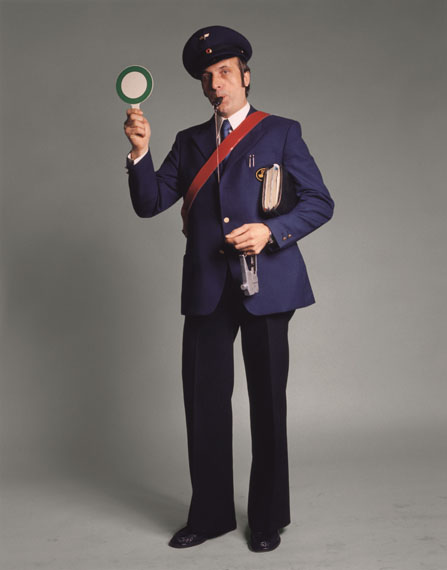
Herr Otto Koniezny, 39 Jahre, Bundesbahnschaffner
© Timm Rautert
"SUBJECT and OBJECT: PHOTO RHINE RUHR"
Exhibition: 8 May – 16 August 2020
For the first time, the exhibition SUBJECT and OBJECT: PHOTO RHINE RUHR will examine the relationships between the different photographic positions that have developed in the cities of the Rhineland as well as the Ruhr and at the regions’ art academies since the 1960s. This unique approach is due to the fact that such a rich photography scene was able to develop in western Germany, which has repeatedly produced new and innovative artistic positions with sometimes very different photographic approaches over the past 70 years. According to the thesis, on the one hand this is due to the density of art academies and trade schools that developed in the Rhine and Ruhr regions after the Second World War. On the other hand, it is also a result of artistic socialization through an intensive art-historical discourse, parallel artistic developments within the visual arts, and the engagement with positions of international art that were shown at the major institutions in Düsseldorf, Essen, Cologne, Krefeld, and Mönchengladbach.
An independent photo class was established in the 1970s at the Kunstakademie Düsseldorf with Bernd and Hilla Becher. At what is now the Folkwang University of the Arts in Essen, where a photo class led by Max Burchartz existed as early as the 1920s (parallel to the developments at the Bauhaus in Dessau), photography was once again taught as an independent specialization starting in 1959, initially under Otto Steinert. Thus, two of the most internationally influential schools of photography emerged in close proximity to each other in Germany. In the vicinity of these two cities, there are further influential institutions with earlier art schools in Krefeld and Cologne in the 1960s and 1970s, where Arno Jansen served as head of the art and photography departments. In addition to the Folkwangschule in Essen and the Kunstakademie Düsseldorf, the Kunsthochschule für Medien, which was founded in the 1990s, is another important site for photography in Cologne, where Beate Gütschow has been
teaching artistic photography since 2011, following Jürgen Klauke and Tobias Zielony.
The teachers’ works exhibit different perspectives on the medium of photography, especially in the artistic context. In Essen there was Otto Steinert with his approach of "subjective photography." In Düsseldorf, Bernd and Hilla Becher, who followed a conceptual approach out of which a photographic practice developed that can also be seen in the tradition of the New Objectivity of the 1920s. In Cologne, in addition to Alfred Will, who was strongly oriented toward the ideas of the German Werkbund and initially trained as a graphic designer, there was Arno Jansen, who dealt with new artistic possibilities of the medium of photography in addition to the traditional genres such as portraits and still lifes. In Krefeld there was Detlef Orlopp, whose work explored abstraction and the process of recognition through the gaze in hyper-precise photographs.The extent to which teachers in the Rhineland and the Ruhr proclaimed their own artistic work and the subjective or objective photographic approach and thus shaped several generations of young photographers to this day will be discussed and highlighted in the exhibition.
The Bechers’ legendary class with now internationally celebrated "students" such as Andreas Gursky, Candida Höfer, Thomas Ruff, and Thomas Struth as the Düsseldorf School of Photography is one of the most successful movements in the history of photography. Graduates from Essen with Timm Rautert, Michael Schmidt, and Joachim Brohm are known and respected around the world for their documentary and artistic approaches. Jürgen Klauke, Astrid Klein, and Rudolf Bonvie developed independent artistic approaches in Cologne which dealt with issues of identity and gender beginning in the late 1960s. At the same time, Katharina Sieverding created her feminist-influenced art in Düsseldorf.
Central positions from all three generations as well as similarities and differences between the artistic approaches will be presented, but above all also positions that have received less attention will be featured and discussed in this context.
The Kunsthalle Düsseldorf hosted an exhibition by Bernd and Hilla Becher in 1969 under the title Anonymous Sculptures as well as a major solo exhibition with works by Andreas Gursky in 1998. Following in this tradition, and with a clear focus on artistic photography, SUBJECT and OBJECT: PHOTO RHINE RUHR explores the different fields of experimentation in the medium between subject and object.
Since the 1920s, not only in Germany, a visually striking spirit of capturing reality through photography has emerged, in which the elementary questions about the significance and meaning of the supposedly real image continue to be asked—especially with regard to the emergence of digital photography and its possibilities for manipulating the real.
The exhibition SUBJECT and OBJECT: PHOTO RHINE RUHR undertakes a methodological and chronological examination for the first time and is curated by Ralph Goertz with Gregor Jansen and Dana Bergmann.
A catalog in German and English will be published alongside the exhibition.
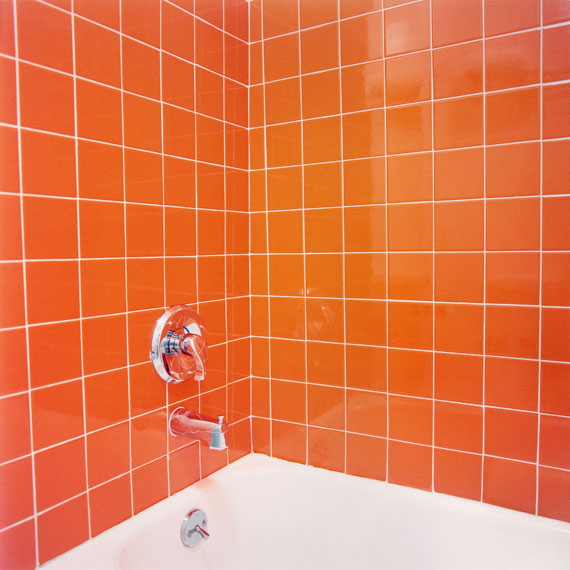
The Standard Los Angeles I 2000, 2000
© Candida Höfer, Köln / VG Bild-Kunst, 2020
"SUBJEKT und OBJEKT.
FOTO RHEIN RUHR"
Ausstellung: 8. Mai bis 16. August 2020
Eröffnung: Freitag, 20. März, 19 Uhr
Die Ausstellung SUBJEKT und OBJEKT. FOTO RHEIN RUHR betrachtet erstmalig die Bezüge der unterschiedlichen fotografischen Positionen, die sich im Gebiet der rheinländischen Metropolen sowie dem Ruhrgebiet und den dort ansässigen Kunsthochschulen seit den 1960er-Jahren herausgebildet haben. Das Besondere an diesem Ansatz ist dem Umstand geschuldet, dass sich im Westen Deutschlands eine so reichhaltige Fotoszene entwickeln konnte, welche über die letzten 70 Jahre immer wieder neue und innovative künstlerische Positionen mit zum Teil sehr unterschiedlichen fotografischen Ansätzen hervorgebracht hat. Dies geht, so die These, einerseits auf die Dichte der Kunsthochschulen und Werkschulen zurück, die sich an Rhein und Ruhr nach dem Zweiten Weltkrieg herausbildeten. Andererseits aber auch auf die künstlerische Sozialisation durch einen intensiven kunsthistorischen Diskurs, die parallel stattfindende künstlerische Entwicklung innerhalb der bildenden Kunst und die Auseinandersetzung mit Positionen der internationalen Kunst, die in den großen Institutionen in Düsseldorf, Essen, Köln, Krefeld und Mönchengladbach gezeigt wurden.
An der Kunstakademie Düsseldorf wurde in den 1970er-Jahren mit Bernd und Hilla Becher eine eigenständige Fotoklasse gegründet. An der heutigen Folkwang Universität der Künste in Essen, wo bereits in den 1920er-Jahren eine Fotoklasse unter der Leitung von Max Burchartz (parallel zu u.a. den Entwicklungen im Bauhaus in Dessau) existierte, wird seit 1959 wieder Fotografie, zunächst unter Otto Steinert, in einem eigenständigen Studiengang gelehrt. Somit befinden sich zwei der international einflussreichsten Ausbildungsstätten für Fotografie in Deutschland in unmittelbarer Nähe zueinander. Richtet man seinen Blick ins direkte Umfeld dieser beiden Städte, so findet man in den 1960er- und 1970er-Jahren weitere einflussreiche Ausbildungsstätten mit früheren Werkkunstschulen in Krefeld, Bielefeld, Dortmund oder Köln. Neben der "Folkwangschule" in Essen und der Kunstakademie in Düsseldorf bildet die in den 1990er-Jahren gegründete Kunsthochschule für Medien heute einen weiteren wichtigen Fotografie-Standort in Köln, an der in der Nachfolge von Jürgen Klauke und Tobias Zielony seit 2011 Beate Gütschow künstlerische Fotografie lehrt.
In den Werken der Lehrenden finden sich hier bereits unterschiedliche Sichtweisen auf das Medium der Fotografie, insbesondere im künstlerischen Kontext. In Essen Otto Steinert, mit seinem Ansatz einer "subjektiven Fotografie". In Düsseldorf Bernd und Hilla Becher, welche einen konzeptuellen Ansatz verfolgten, aus dem sich eine fotografische Praxis, auch zu sehen in der Tradition der neusachlichen Fotografie der 1920er-Jahre, entwickelte. In Köln unterrichtete Arno Jansen bis 1993 (künstlerische) Fotografie, sein fotografisches Schaffen prägen klassische Bildgattungen wie das Porträt oder Stillleben. Daneben lehrte Alfred Will freie Grafik, der sich stark an den Ideen des Deutschen Werkbunds orientierte. In Krefeld Detlef Orlopp, dessen Werk die Abstraktion und den Erkenntnisprozess des Blicks in hyperpräzisen Fotografien durchdeklinierte. Inwiefern die Lehrenden im Rheinland und Ruhrgebiet ihr eigenes künstlerisches Werk und die jeweils subjektive und objektive fotografische Herangehensweise proklamierten und damit bis heute mehrere Generationen junger Fotograf*innen prägten, soll in der Ausstellung diskutiert und aufgezeigt werden.
So ist die legendäre Becher-Klasse mit heute international gefeierten "Schüler*innen" wie Andreas Gursky, Candida Höfer, Thomas Ruff und Thomas Struth als Düsseldorfer Fotoschule eine der erfolgreichsten Strömungen der Fotografiegeschichte. Die Essener Absolvent*innen mit Timm Rautert und Joachim Brohm sind für ihre dokumentarisch-künstlerischen Ansätze weltweit bekannt und hochgeschätzt. In Köln entwickelten Jürgen Klauke, Astrid Klein und Rudolf Bonvie eigenständige künstlerische Ansätze, die sich bereits Ende der 1960er-Jahre mit Identitäts- und Geschlechterfragen auseinandersetzten. Zeitgleich schuf in Düsseldorf Katharina Sieverding ihre feministisch geprägte Kunst.
Zentrale Positionen aller drei Generationen sowie Gemeinsamkeiten und Unterschiede der künstlerischen Ansätze sollen aufgezeigt, vor allem aber auch bisher weniger betrachtete Positionen in diesem Kontext präsentiert und diskutiert und die Entwicklung einer künstlerischen Fotografie im Gebiet Rhein/Ruhr nachgezeichnet werden.
Die Kunsthalle Düsseldorf zeigte bereits 1969 eine Ausstellung von Bernd und Hilla Becher unter dem Titel "Anonyme Skulpturen" oder 1998 eine große Solo-Ausstellung mit Arbeiten von Andreas Gursky. Daran anknüpfend mit deutlichem Fokus auf die künstlerische Fotografie erforscht SUBJEKT und OBJEKT. FOTO RHEIN RUHR die unterschiedlichen Experimentierfelder des Mediums zwischen Subjekt und Objekt.
Die Ausstellung SUBJEKT und OBJEKT. FOTO RHEIN RUHR unternimmt zum ersten Mal eine Untersuchung in methodologischer wie auch chronologischer Art vor und wird kuratiert von Ralph Goertz mit Gregor Jansen und Dana Bergmann.
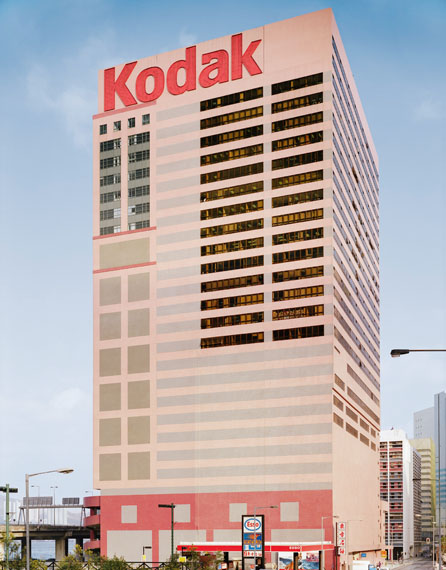
Kodak, 1995
Inkjet-Print, hinter Glas, 107,5 x 91,7 x 4,2 cm gerahmt
Leihgabe Andreas Gursky
© Andreas Gursky / VG Bild-Kunst, Bonn 2020
Courtesy: Sprüth Magers